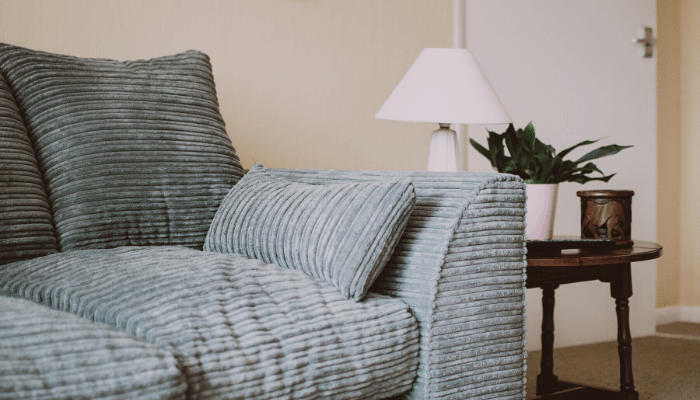All the Documents You Need to Start Applying for a Mortgage, Your First Step to Homeownership
Want to buy a home? Before you get the keys, you’ll have to review and submit a lot of documents to apply for a mortgage, unless you plan to pay in cash.
To help you prepare, we’ve spent hours wading through the far reaches of the lender-verse and combing through agency and lender guidelines to find out the core documents you need to start applying for a mortgage.
If you’re thinking of buying a home but aren’t sure where to start, read this to take your first steps toward lining up the financing for your dream home.

Source: (Josh Randall/ Shutterstock)
Proof of income
Mortgages require a lender to make a large upfront investment of money that you will need to repay over a long period of time. To make sure that it makes sense to lend you such a large sum of money, lenders need to see proof of your income: evidence that your income is sufficient and consistent enough that you’ll be able to handle the repayment of the loan.
Here’s what you’ll need to provide:
One to two years of tax returns and W2s or 1099s
Be prepared to provide your lender with up to 2 years of tax returns you sent to the IRS, along with your previous year’s W2s or 1099s. Just what is required will vary by lender and loan product, but lenders want to see these documents to ensure that your income has been stable over the last year or so before they give you a loan.
If you receive regular overtime and/or bonuses, Fannie Mae guidelines state you need to provide two years of tax returns or W2s to show those income sources are consistent and can be relied upon to continue.
For commission employees: be prepared to provide proof of 2 years of commission payments in order to include that amount in your qualifying income. An important note: any unreimbursed business expenses reported on your tax returns will be deducted from your yearly income, which may lower the amount of money you can borrow.
Pay stubs
In addition to tax returns, lenders will also want to see 30 days worth of current pay stubs for W2 employees. Your tax returns show that your income was stable during the last two tax seasons, but current income tells lenders that you can still pay the monthly payment as of today.
Year-to-date profit and loss statement
If you’re self-employed, lenders require a profit and loss statement for the most recent year and will likely require a Year-to-Date statement as well. This assures your income from your business is consistent and stable enough to take on a sizable debt.
Letters of explanation for gaps in employment
If you’ve missed more than a month of work over the past two years, you’ll need to provide a letter to the mortgage company explaining why. A month without income can affect you for many months following, and lenders fear it could cause you to default on a mortgage.
Unemployment income transcripts
Typically, unemployment income is a temporary situation. If it occurs during an employment gap, a lender may ask for verification you’ve received it. However, in seasonal jobs where unemployment is the norm — such as farm work or construction — you can likely use unemployment income to get a mortgage.
It should fly so long as you’ve reported two years of these unemployment benefits to the IRS prior to applying and the lender can see that it is likely to continue.
Proof of real estate income
Rental income is a bit complicated. Any property that you don’t live in is acceptable if you can provide the necessary documentation. Living in a rental property doesn’t exclude you either, as long as you own a multi-unit property and live in one of the units. This income is generally reported on your tax returns, but lenders may ask for lease agreements to support this income stream as well.
Renting out part of your primary residence? You may be able to qualify with Boarder Income but you should speak directly with your lender about this to ensure any boarder income you receive would qualify and you can provide the proper documentation to support it as an income source.
Child support or alimony income
Child support or alimony payments can count toward your ability to borrow if you’ve received payments consistently for the last six months and will continue to receive them for the next three years. Why the extra requirements? Lenders know this income is temporary, but long-term payments can also help you meet your financial obligations. Be prepared to provide bank statements to prove you have received these payments and court records showing that you are entitled to these payments for at least 3 more years.
Proof of any other income
Does your income look different from the above examples? If so, it’s still possible to use it to secure a mortgage loan. Fannie Mae’s income guidelines include other types of income allowed during qualification.
Here are some of the most common:
- Social Security income
- Long-term disability payments (not Social Security)
- Retirement (also government annuities and pensions)
- VA benefits
- Tips or gratuities included on previous two years of tax returns
Each of these income types may require special documentation as evidence, so talk to your lender in advance to ensure you’re prepared. If you don't have a lender, click here and we can get you in touch with one of our preferred lenders.
Source: (Pixabay/ Pexels)
Down payment plan
According to the National Association of Realtors, 58% of homebuyers used their savings for a down payment in 2018. Different loan types also have different rules about how much help you can receive. If you’re getting help with this initial chunk of change, here’s the documentation you’ll need to provide.
Source of down payment funds
If your down payment is sitting in the bank, be prepared to provide the lender with two months of bank statements. If it’s coming from somewhere else, you’ll need to provide documentation of the source of your down payment funds. We’ve listed some of the most common sources below:
Gift letters from friends or family members providing the funds
Certain loan types allow gift funds to cover all or part of your down payment, but they may only allow these gifts from certain sources. Check with your lender for any restrictions before accepting a gift.
For example, under FHA guidelines, anyone gifting you money must provide a letter stating the amount given as well as their name, address, relationship, and that no repayment is necessary. Check with your lender to see what is required specific to the loan program you are interested in.
Paperwork from assistance programs
Coming up with a down payment is often prohibitive to homeownership. But numerous programs exist to help homebuyers come up with the cash. As with gift letters, lenders require documentation showing where any cash from assistance programs is coming from.
Don’t forget those assets
In addition to your down payment, lenders may also want to see you have sufficient savings and liquid assets to cover your mortgage payment for a couple of months in the event something goes wrong. These are generally called “reserve requirements”.
The first place they are going to look for cash for reserve funds is in your general checking and savings accounts, but lenders may also allow you to use certain retirement and investment accounts to satisfy reserve requirements so long as at least some of the money held in those accounts is deemed sufficiently “liquid” — that is, fairly easily converted into cash.
Here’s the skinny on what you may need to provide to verify assets for any reserve requirements:
60 days of bank statements
Bank statements are critical to determining the amount of cash you have readily available and how long you have had it. You’ll need to be ready to give the lender statements for at least the most recent two months. This allows the lender to confirm that your current balance isn’t reflecting a recent cash infusion, but instead that there has been a consistent balance of sufficient funds.
Last quarterly statement for 401k or retirement accounts
If you want to rely on funds held in a 401k or other retirement account to help support certain reserve requirements, at a minimum, Lenders will need to see your most recent quarterly statement to verify the liquidity of these assets.
Last 60 days of IRA statements
Though IRAs are typically considered retirement accounts, statement cycles are usually monthly instead of quarterly. If that’s the case for yours, provide your lender with the most recent two months of statements.
Last two months of brokerage account statements
In addition to retirement fund verification, lenders may need statements from any brokerage accounts you have and wish to use to support asset requirements. You’ll need to be prepared to provide at least two months of recent statements.
Existing debts, past financial history, and other obligations
Lenders need to get a full picture of your financial health, which includes looking at your debt, credit history, and liabilities. Unlike other categories, documentation isn’t always necessary unless there’s a discrepancy in your credit report.
Credit report
While the lender will pull your credit report directly to underwrite your loan, you should know what your credit report looks like before you apply so you can be prepared. You’re entitled to a full credit report at no cost from each of the three nationwide credit reporting companies—Experian, Equifax, and TransUnion—every year.
Before you apply for a mortgage, it’s best to get copies of all three credit reports. This gives you time to review and correct any errors so you’re not surprised later.
Debt and expenses
Lenders will look at any recurring expenses and debts to calculate your overall monthly debt payments. They will compare your total monthly debt payments to your income to determine your “Debt-to-Income Ratio” that helps them determine your ability to repay a mortgage. Examples of these recurring debts include:
- Utilities
- Child support/alimony
- Installment loans
- Lines of credit
- Student loans
One thing to note is that all of your monthly debts may not be included in your credit report. Things like child support payments or utility payments may not appear on your credit report, so be prepared to provide additional documentation on these amounts if your lender asks for them.

Source: (Zoriana Stakhniv/ Unsplash)
Special circumstances
If you’re getting back on your feet after a divorce, foreclosure, or bankruptcy, you may still be able to get a mortgage. Certain situations have required waiting periods before you apply. If you’re a repeat offender, however, you may not be eligible for a mortgage. Ultimately, the decision is up to your lender.
If any of these special circumstances apply, here’s the documentation you should have ready:
Bankruptcy paperwork
Chapter 7 or 11 Bankruptcy has a four-year waiting period before you’re eligible to apply for a mortgage. However, in special circumstances you may be eligible in two. For Chapter 13 Bankruptcy, the waiting period is two years from discharge or four years from dismissal. If you’ve filed bankruptcy more than twice in the past seven years, you’ll have to wait five years. Save all your paperwork and provide to your lender if they request it.
Divorce decree
Always provide copies of your divorce paperwork if a lender asks for them. This allows lenders to verify that assets and liabilities in both names are taken care of. Lenders may also use divorce paperwork to verify extenuating circumstances that prevent someone from meeting obligations.
Foreclosure documents
Foreclosures require a seven-year waiting period before you can get a new mortgage. However, documented extenuating circumstances can shorten that to three years, as long as you meet other requirements. Foreclosure alternatives like deed-in-lieu, charge-offs, or pre-foreclosure sales have a four-year waiting period. Lenders can use the information on your credit report and may ask for additional paperwork, so have it ready.
When should you start gathering up these documents?
The sooner you can start piecing together what you’ll likely need to apply, the better.
Sure, you can get pre-approved for a mortgage without providing much paperwork. However, underwritten pre-approval — like the Conditional Approval offered by HomeLight Home Loans — is a better indication of how likely you are to get a mortgage (and will require that you provide much of the necessary documentation upfront).
Regardless of whether you choose to submit all this documentation to a lender who will review it upfront or wait until further in the process, once you’ve found that house and your offer has been accepted, you’re going to have to submit a whole lot of documentation to complete your application and receive a full approval from your lender.

Source: (Lisa Fotios/ Pexels)
Common homebuyer mistakes between application and closing
Your loan is not complete after pre-approval, and it’s not even complete after you submit all your documentation, and get a full approval. Your loan really isn’t complete until the lender verifies everything is as it should be and determines your loan is clear to close.
While some factors that can affect your qualification for your mortgage and the purchase of a home are out of your control (like the appraisal), there are several moves you can make between application and closing that could prevent you from getting a mortgage.
Lenders review your credit, income, and assets soon after you submit your application and if all goes well, they’ll issue an approval for your loan. But that approval is not set in stone until they clear you to set a closing date.
Before they do so, they may request signatures on certain documents, make additional documentation requests, etc. and because all these things can take time, they will also want to make sure none of the information you submitted in your application has changed between when you applied and when your loan is ready to close.
If any of the information they relied on to approve your loan changes dramatically while your loan is being processed, they may have no choice but to deny your loan, even if it is right before the purchase is supposed to close.
Here are some of the things you shouldn’t do while you’re waiting to close on your new home:
- Change jobs
- Make purchases for large items like cars or furniture on credit
- Withdraw large amounts from accounts relied upon for assets
- Bring less money than required
- Fail to meet deadlines in the sales contract
It’s important that you make sure your general credit and financial picture remains the same during the period between application and close. Don’t make any big life changes during this time. Wait until your loan closes and you have those keys in hand. It will be worth it!
Find "The One"
Your dream home awaits! We're here to guide you through the simple steps to a buyer's success.
Time For a Change?
Get excited about your next chapter! We bring patience, compassion, and calmness to what most consider an overwhelming process.





